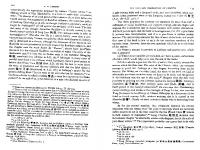To Date and Not to Date: On the Date and Status of Byzantine Law Books [Bilingual ed.] 9069800969, 9789069800967
Scientific reserach implies progress. Sometimes, however, progress merely consists of a step back to the past, as in the
135 73 28MB
English Pages 251 [282] Year 1996
Title Page
Copyright Page
Table of Contents
Preface
Abbreviations
Bibliography
Introduction
Chapter 1 Dating the Eisagoge
Chapter 2 Dating the Prochiron
Chapter 3 Ecloga, Prochiron and Eisagoge. On Their Interrelation
Chapter 4 Arethas, Proch. 4,25 and the Issue of Leo's Fourth Marriage
Chapter 5 'Of Our Pious Emperor'. On the Scholia on the Eisagoge
Chapter 6 One Text, Different Versions? On the Sixty Books, the Basilica and the Florilegium Ambrosianum
Chapter 7 On the Eisagoge cum Prochiro composita
Chapter 8 Eisagoge cum Prochiro composita and τò πλάτος
Chapter 9 'Exemplary, My Dear Watson'. On B. 60,58,l
Chapter 10 'Αείμνηστος πατήρ. On the Novels of Leo and the Prochiron
Chapter 11 Chaotic Cleansing. Basil's Purification of the Old Laws
Chapter 12 Unadorned Prologue. On the Preface to the Basilica
Chapter 13 Σωματοποιία. On Leo's Legislative Intentions
Conclusions
Indices
Recommend Papers
![To Date and Not to Date: On the Date and Status of Byzantine Law Books [Bilingual ed.]
9069800969, 9789069800967](https://ebin.pub/img/200x200/to-date-and-not-to-date-on-the-date-and-status-of-byzantine-law-books-bilingualnbsped-9069800969-9789069800967.jpg)
- Author / Uploaded
- Thomas Ernst Van Bochove
File loading please wait...
Citation preview
To Date and Not To Date
To Date and Not To Date On the date and status of Byzantine law books
Th. E. van Bochove
EGBERT FORSTEN
GRONINGEN
Cover illustration: Reproduction of an icon of St. John the Theologian 'In Mystical Silence', Russian tradition, reportedly 16th or 17th century Cover design: Jose Juten
©Copyright 1996 Egbert Forsten, Groningen All rights reserved. No part of this publication may be reproduced, stored in a retrieval system, or transmitted, in any form or by any means, electronic, mechanical, photocopying, recording, or otherwise, without the prior written permission of the publisher.
ISBN 90 6980 096 9
And further, by these, my son, be. admonished: of making many books there is no end: and much study is a weariness of the flesh. Ecclesiastes 12:12
PREFACE Long ago Jane Austen wrote in Pride and Prejudice: 'It is a truth universally acknowledged, that a single man in possession of a good fortune, must be in want of a wife. ' Somewhat varying on this theme, one could say: it is a truth universally acknowledged that every single book, regardless its contents, must be in want of a preface. Both Byzantine law books and the present study have complied with this maxim. However, the preface to this study is considerably less majestic and far-reaching than the prefaces to Byzantine law books. The present preface lacks theological and philosophical considerations. It does not contain quotations from the Bible in order to reflect on law and justice. It does not refer to a preceding law book and omits a dispositio. It does not include a survey of the sources of Byzantine law and lacks a rubric providing an invocatio, author's name and date. It does not even aim at introducing the present study: this will - hardly surprisingly - be done in the introduction. Then what is the point of this preface? First, to provide a number of rather down-to-earth preliminary remarks. The first remark concerns names occurring in this study. These names have been written in accordance with the system used in the Oxford Dictionary of Byzantium. The second remark concerns the dating of Byzantine legal manuscripts. Unless indicated otherwise, these manuscripts are dated in accordance with the recently published first volume of the Frankfurt repertory listing the manuscripts containing secular law. A third remark concerns the list of abbreviations and the bibliography. The list of abbreviations merely records the names of periodicals referred to in the bibliography and the sources used most frequently and quoted in an abridged way throughout this study. The bibliography lists the works consulted and referred to in an abbreviated form in the footnotes. The list of abbreviations and the bibliography should be used in conjunction with one another. The main purpose of this preface is, however, of a completely different nature. A book is mostly written by one author who is entirely responsible for its contents. This does not imply that the book concerned has come. into existence through one person only. On the long and sometimes very slippery road which has eventually led to the genesis of this study, I have encountered many persons who supported me in every possible way. First and foremost Prof. Dr. N. van der Wal must tle mentioned. It is he who initiated me into the subject-matter of this study, prevented me from making many missteps, ever encouraged me to continue and was and still is always prepared to listen, to teach and to talk. Moreover, he showed me the close link that exists between writing a thesis and writing a detective story. He has truly been my first antecessor in the field of Byzantine law. My deeply felt, but inadequately expressed gratitude also extends to my supervisors Prof. Dr. B.H. Stolte and Prof. Dr. J.H.A. Lokin. Their support and guidance equal those of Van der Wal's. I am greatly indebted to my former teachers Prof. Dr. W.J. Aerts, Prof. Dr. D. Holwerda and Prof. Dr. S.L. Radt for giving me their valuable and indispensible comments on many details VII
and issues. I am also very grateful to Prof. Dr. J. Roldanus who through his comments in all probability stopped me from adding a new heresy to the long and impressive list of existing ones and thus prevented me from making the world of Byzantine theology even more complex and intricate than it already is. My gratitude extends to the members of the Department of Byzantine Law at the Max-PlanckInstitut fiir europiiische Rechtsgeschichte in Frankfurt/M., especially to Dr. L. Burgmann, Prof. Dr. M. Th. Fogen and Dr. A. Schminck for the many stimulating conversations and for their ever continuing interest and encouragement, both during and after my visit to Frankfurt in 1991. Of my colleagues in the Department of Legal History in the Faculty of Law of the Groningen University, three must be mentioned in particular: R.J.H. Brink LL.M. whose help proved to be indispensable in the final stages of the genesis of this study: its lay out; Dr. Roos Meijering who translated the Dutch version of chapter 6 into English and never failed to give me her advice and moral support, and Lia Scheffer M.A. who indefatigably typed earlier drafts of this study, prevented me from dating a manuscript to the first second of the eleventh century, taught me how to use Nota Bene and helped me in compiling the indices. The research was supported by the Foundation for History, Archaeology and Art History, which is subsidized by the Netherlands Organisation for Scientific Research (NWO). I also owe many thanks to the Stichting 'Het Groningsch Rechtshistorisch Fonds' and to the Aemilius Papinianus-Stichting in Utrecht for their financial contributions to the publication of this thesis. It almost goes without saying that the present study to a large extent owes its very existence to what may be alluded to as the home front. Many friends and relatives who for the sake of brevity must remain unnamed, but are certainly not forgotten, never ceased to take a keen interest and never stopped to provide the sometimes highly necessary inspiration. I confine myself to mentioning the names of those who represent my home front: Alida Everts, and Joanneke Goebertus, my 'paranimfen'; and above all Anneke Ypma, my wife, who translated this book into English (with the exception of chapter 6). She thus participated in its creation and saw it all happen, from the cradle to the press. She witnessed all ups and downs from within and bore the brunt of every season. I cannot thank her enough for that. Having met and married her has truly proved to be my good fortune.
VIII
CONTENTS Preface
VII
Contents
IX
Abbreviations
XI
Bibliography
XIII
Introduction
1
Chapter 1 Dating the Eisagoge
7
Chapter 2 Dating the Prochiron
29
Chapter 3 Ecloga, Prochiron and Eisagoge. On Their Interrelation
57
Chapter 4 Arethas, Proch. 4,25 and the Issue of Leo's Fourth Marriage
83
Chapter 5 'Of Our Pious Emperor'. On the Scholia on the Eisagoge
99
Chapter 6 One Text, Different Versions? On the Sixty Books, the Basilica and the Florilegium Ambrosianum
107
Chapter 7 On the Eisagoge cum Prochiro composita
123
Chapter 8 Eisagoge cum Prochiro composita and ro 'll'Aaro-.ia Z'. BmnALKwv libri LX, 7 vols., Paris 1647 Ferrini (t), C./Mercati, I., [edd.], M. Kpiroil roil IforN Tt?rot!Keiro~, sive librorum LX Basilicorum summarium. Libros I-XII, [Studi e Testi, 25], Roma 1914 Ferrini, E.C./Mercati, J., [eds.], Basilicorum Libri LX. Vol. VII. Editionis Basilicorum Heimbachianae supplementum alterum, Leipzig 1897 Fichtenau, H., Beitriige zur Mediiivistik. Ausgewiihlte Aufsiitze, II: Urkundenforschung, Stuttgart 1977 Fichtenau, H., 'Zur Geschichte der Invokationen und "Devotionsformeln'", in: Fichtenau, Beitriige zur Mediiivistik, II, 37-61 Fischer, Fr., 'De patriarcharum Constantinopolitanorum catalogis et de chronologia octo primorum patriarcharum', Commentationes philologae Ienenses III (1884), 263-333 Fischer, W., review of Ferrini/Mercati, Basilicorum Libri LX. Vol. VII, in: BZ 8 (1899), 163190 Fogen, M. Th., 'Die Scholien zur Hexabiblos im Codex vetustissimus Vaticanus Ottobonianus gr. 440', FMIV (1981), 256-345 Fogen, M.Th., 'Gesetz und Gesetzgebung in Byzanz. Versuch einer Funktionsanalyse', Ius Commun~ XIV (1987), 137-158 Fogen, M. Th., 'Humanistische Adnotationen zur editio princeps der Hexabiblos', Ius Commune XIII (1985), 213-242 Fogen, M.Th., 'Legislation und Kodifikation des Kaisers Leon VI.', SG III (1989), 23-35 Fogen, M.Th., 'Leon liest Theophilos. Eine Exegese der Novellen 24-27 des Kaisers Leon VI.', SG IV (1990), 83-97
XVI
Fogen, M.Th., 'Zur Einteilung der Digesten: Drei byzantinische Traktate', FM V (1982), 126 Follieri, E., 'La reintroduzione di lettere semionciali nei piu antichi manoscritti greci in minuscola', Bullettino dell' "Archivio paleografico italiano", terza serie, I (1962), 15-36 Gardthausen, V., Katalog der griechischen Handschriften der Universitats-Bibliothek zu Leipzig, [Katalog der Handschriften der Universitats-Bibliothek zu Leipzig, III], Leipzig 1898 Gkines, D.S., "O inr' apiO. 121 xpovoA.o-yim: rijc;
KWOt~ 'EKA.o-y~c; TWV
(1961/1962), 351-352
rijc; Mov~c; 'ky. NtKcYVOpoc; (Z&{3opocxc;) KO:L OVo 'focxvpwv K. Afr. The extracts BK roil 7rAarov~ continue up to and including f. 33v. The text of EPc 40 is only continued on f. 34•. The first chapter is chapter 40, in the left margin clearly marked as Ke. µ'. Above this chapter-reference, on the same leaf, we read the note roil 7rpoxeipov. 63 The phrase roil 7rpoxeipov, here at the heart of the text of an EPc-title, can only be understood as a marking of the recommencement of the main text of the EPc. We can conclude that the excerpts from the Basilica do not belong to the original text of the EPc in P. Moreover, we can conclude that the scribe of P called the law book 7rpoxeipov, or 7rpoxeipo~ 110µ0~. This reference is confirmed by the closing note of the law book on f. 37v. Here we read: reA.o~ roil 7rpoxeipov 'End of the manual'. 64
So far, we have discussed only one EPc-manuscript containing excerpts BK roil 7rAarov~, viz. P. Was it the scribe of P who added these Basilica-excerpts to the EPc? Or did this happen earlier in the transmission of the law book? 61
In the latter case the scribe of P would have designated the Eisagoge as Ilpoxcipov or Ilpoxcipo..fotc; Toi









